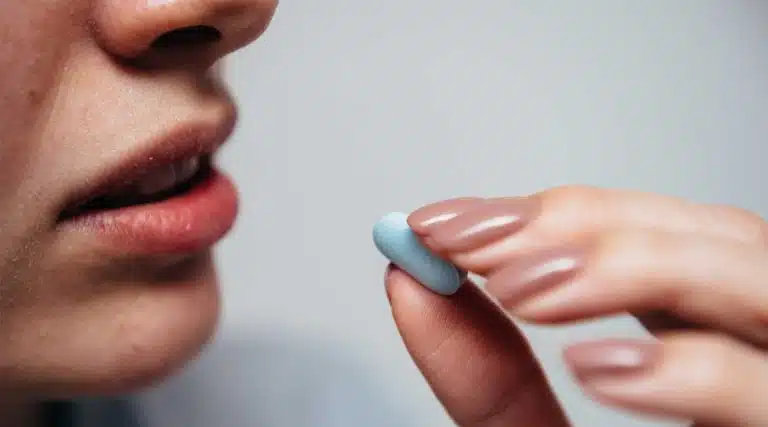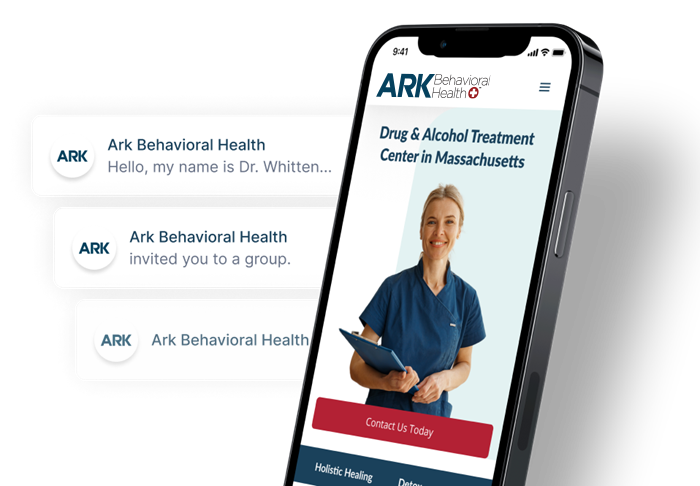Opioid Abuse & Addiction | Overdose, Withdrawal, & Treatment Options
- How Do Opioids Work?
- List Of Opioids
- Opioid Addiction
- Opioid Overdose Deaths
- Opioid Withdrawal
- Opioid Treatment
- FAQ

Opioids are mind-altering drugs used for pain relief. In the last two decades, opioid abuse has become an opioid epidemic that has led to thousands of drug overdose deaths in the United States alone.
Although opioid misuse may start with a doctor’s prescription, abusing opioids can lead to poor health, overdose, and addiction. Seeking help for opioid addiction now can save your life.
Opioid Abuse
If you’ve been prescribed opioids for chronic pain, like oxycodone (OxyContin), hydrocodone (Vicodin), or codeine, it’s important to follow your doctor’s recommendation. Taking them at a higher dose, more often, or for longer than prescribed is considered prescription drug abuse.
Using opioid painkillers without a prescription is also abusing them. Before you self-medicate, you should consult a doctor. The opioid crisis has shown time and time again that these medications are dangerous.
How Are Opioids Misused?
Most people who abuse opioids take them orally, as intended. But others crush them to snort the powder or mix them in a solution for injection.
The National Institute on Drug Abuse (NIDA) reports that less than four percent of people who start abusing prescription opioids eventually transition to heroin use, an illegal drug with similar effects.
However, most people who use heroin choose the drug because it’s cheaper and easier to get than going through the opioid prescribing process.
Opioids are a highly addictive class of drugs, which is why prescriptions need to be closely monitored. All opioids are controlled substances, meaning that if you’re found with them in your possession and you don’t have a prescription, you could face criminal consequences.
How Do Opioids Work?
Opioids act on receptors in the brain that block pain signals, decreasing or eliminating pain felt in your body. They slow down the central nervous system and increase your dopamine levels, so you feel relaxed and euphoric.
Even with prescribed use, you can grow tolerant to opioids, meaning they have less of an effect over time. This is why health care providers generally prescribe opioids for short periods.
If you take them too long, your brain starts to adapt by producing less of its natural chemicals, depending on the drugs instead. You crave them and are unable to get the same sense of pleasure from healthy activities like exercise.
List Of Commonly Abused Opioids
Although prescription opioids can be effective and safe for pain management when used as directed, several opioid drugs are routinely abused.
Codeine
Codeine is one the most commonly prescribed opioids available. It’s used as a painkiller and a cough suppressant, and is frequently abused by mixing the liquid solution with carbonated beverages or alcohol. This mixture is referred to as “purple drank” or “sizzurp.”
Learn more about Codeine Abuse And Addiction
Carfentanil
Carfentanil is not approved for use in human beings in the United States. This powerful opioid is estimated to be 100 times stronger than fentanyl, and it’s only approved use is as a sedative for large animals. Unfortunately, this opioid is tied to thousands of overdose deaths in the U.S.
Learn more about Carfentanil Abuse And Addiction
Hydrocodone
Hydrocodone is the narcotic ingredient in Vicodin and Lortab. Although hydrocodone is only considered moderately potent, it’s a DEA Schedule II drug, which means it has a high potential for abuse and can lead to physical and psychological dependence.
Learn more about Hydrocodone Abuse And Addiction
Hydromorphone
Hydromorphone (brand name Dilaudid) is more potent than morphine and causes effects like sedation, euphoria, and relaxation. It’s abused for its potency, and can lead to addiction if it’s not taken as directed or used without a prescription.
Learn more about Hydromorphone Abuse And Addiction
Fentanyl
Fentanyl is a powerful synthetic opioid that is involved in thousands of overdose deaths each year. This is a dangerous substance because it is often mixed into street drugs like heroin or cocaine without people knowing; just a small amount of fentanyl can lead to a fatal overdose.
Learn more about Fentanyl Abuse And Addiction
Meperidine
Meperidine, commonly known as Demerol, is an opioid analgesic painkiller. It can be quite addictive because of its effects on the brain. This substance has a similar abuse potential to morphine, and it is classified as a Schedule II Controlled Substance.
Methadone
Methadone is a synthetic opioid that has FDA-approval for treating withdrawal symptoms associated with opioid use disorder. While this drug can be safe under medical supervision, using it without a prescription, or taking more than directed, can lead to abuse and addiction.
Learn more about Methadone Abuse & Addiction
Morphine
Morphine is a naturally occurring opiate that’s derived from the opium poppy plant. Due to its effectiveness for relieving pain, as well as its effects of sedation and euphoria, this opioid has a strong potential for abuse, especially when it’s injected or mixed with alcohol or other drugs.
Learn more about Morphine Abuse & Addiction
Oxycodone
Oxycodone (Oxycontin, Percocet) has a strong potential for abuse when it’s used for extended periods of time or without a prescription. Heating tablets on foil and inhaling the vapor, crushing tablets and snorting them, or dissolving tablets in water for injection are all signs of abuse.
Learn more about Oxycodone Abuse & Addiction
Oxymorphone
Oxymorphone is the generic name for the brand-name prescription painkiller Opana. Oxymorphone relieves pain but can also cause euphoric effects, similar to other opioids. It is a potent opioid with a high risk for abuse and dependence.
Learn more about Oxymorphone Abuse And Addiction
Suboxone
Suboxone is the brand name for a combination of buprenorphine and naltrexone. Although it’s approved to address cravings and dependence associated with opioid use disorder, it has potential for abuse when it’s mixed with benzodiazepines, alcohol, and other depressants.
Learn more about Suboxone Abuse And Addiction
Tramadol
Tramadol is an opioid prescribed under brand names Ultram and ConZip. Although this substance isn’t as strong as other opioids, it can still lead to addiction and dependence. Some may not even know they’re addicted to tramadol until they try to stop use.
Learn more about Tramadol Abuse & Addiction
Opioid Addiction
Opioid addiction is marked by a loss of control over drug use, often despite poor health or negative life changes. Heroin and prescription opioids change the way your brain works. When you’re addicted, you prioritize opioids and need them to function.
Signs of opioid use disorder can also include:
- empty, unmarked pill bottles or bags
- prescriptions from multiple doctors (“doctor shopping”)
- financial struggles from buying drugs
- stealing money or drugs from loved ones
- loss of interest in hobbies and social activities
- change in appetite and sleep habits
- neglected hygiene and poor mental health
Addiction isn’t something you can overcome by willpower alone. Most people benefit from a comprehensive healthcare program that teaches healthy habits to replace opioid use.
Learn more about Opioid Use Disorder
Opioid Overdose Deaths
Opioid overdose is a serious problem that causes an average of 128 deaths per day in the United States. Symptoms of drug overdose include pinpoint pupils, bluish skin or nails, difficulty breathing, and loss of consciousness.
Many factors can lead to an opioid overdose death, such as:
- Dosage: If you take a higher dose of opioids than prescribed, or take them more often, the last dose may not be out of your system when you take another. The drugs can build up faster than your body can metabolize them, raising the risk of overdose death.
- Addiction: If you have opioid use disorder, your tolerance to opioids is probably significant. The more you take, the more your tolerance grows. But just because the drugs don’t have as strong of an effect doesn’t mean your body can handle them.
- Method of abuse: Injecting opioids or snorting them can increase overdose risk, too. These methods produce a quicker and more intense effect, which makes them even more dangerous to public health.
- Type of opioid: Fentanyl, a synthetic opioid used to treat severe pain, is 50 to 100 times stronger than morphine, a more common pain reliever. While overdose is possible with any opioid, it’s easier to overdose on a more potent drug.
An opioid overdose occurs because the drugs slow the central nervous system too much, affecting vital functions like breathing. Lack of oxygen can cause permanent brain damage and death.
Mixing opioids with other central nervous system depressants, like alcohol or benzodiazepines, is never recommended for this reason. If you or a family member are experiencing an opioid overdose, please contact your local emergency department immediately.
Learn more about Opioid Overdose
Opioid Withdrawal & Dependence
Taking opioids over time causes the body to develop a physical dependence, so it relies on the drugs to function normally. If you suddenly stop taking them, you’re likely to have withdrawal symptoms.
Opioid withdrawal symptoms may include:
- anxiety
- insomnia
- muscle aches
- sweating
- diarrhea
- goosebumps
- nausea
- vomiting
The withdrawal process can be very uncomfortable and leads many people to resume taking opioids or engage in substance abuse for relief. It’s helpful to have support during detox to keep you stable and prevent relapse.
If you’re taking prescription pain medication, your doctor will likely work with you to create a tapering schedule. Tapering allows you to slowly wean off opioids and avoid intense withdrawal symptoms.
Opioid Treatment
Opioid addiction treatment may begin with medical detox to ensure you’re able to stop taking opioids safely. Detox may include a tapering schedule, in which your dosage is slowly reduced or the opioid is replaced by a less potent drug.
Medication-Assisted Treatment
You may continue to have cravings after you stop using heroin or other opioids, which can make it a challenge to focus on treatment. Medication-assisted treatment (MAT) has been found to be effective for people with opioid use disorder.
MAT combines medication and behavioral therapy to ease withdrawal symptoms and make recovery more attainable.
There are three FDA-approved medications to treat opioid addiction:
- Buprenorphine targets opioid receptors to reduce withdrawal symptoms. It’s often combined with naloxone (Suboxone) to prevent euphoria.
- Methadone (Methadose) is a mild opioid that decreases cravings and withdrawal symptoms without the intense high of stronger drugs, like heroin.
- Naltrexone (Vivitrol) blocks the effects of opioids in the brain so you can’t feel their pleasurable effects.
The most effective opioid treatments blend several therapies into a unique treatment plan that suits your needs. Treatment services may include therapy and counseling, as well as experiential methods like yoga, art, and music that introduce you to a healthier lifestyle.
Learn more about Opioid Treatment Programs
To learn about individualized rehab programs for opioid addiction or other substance use disorders, reach out to a treatment specialist at Ark Behavioral Health today.
FAQ
What Is The Opioid Epidemic?
The opioid epidemic in the United States is defined as the rapid growth of opioid use (prescription and non-prescription) that has evolved into abuse and addiction.
It’s an evolving public health crisis that’s motivating treatment providers, government agencies, and other organizations to take proactive steps, like treatment approaches and preventative measures, to reduce the impact of the crisis.
Learn more about The Opioid Epidemic
What Are The Risks Of Prescribing Opioids For Pain?
Prescription opioids are designed to relieve chronic pain and provide safe pain management. However, there are some risks involved, especially when the medication isn’t used as directed.
Risks include opioid use disorder or addiction, overdose, tolerance, physical dependence, depression, and other side effects.
Learn more about Prescription Opioid Abuse & Addiction
What Are Some Opioid Street Names?
Most opioids have a number of street names. Here are some of the most common:
- codeine: Captain Cody, Schoolboy, Sizzurp, Purple Drank
- hydrocodone: Hydro, Dro, Bananas, Fluff
- hydromorphone: Dust, Footballs, Juice, Smack
- fentanyl: China Girl, China White, Dance Fever, Fenty, Jackpot
- methadone: Chocolate Chip Cookies, Dollies, Fizzies, Metho
- morphine: Dreamer, Miss Emma, Monkey, White Stuff
- oxycodone: Bananas, Greenies, Hillbilly Heroin, Oxy
- suboxone: Boxes, Orange, Sobos, Stubs
Learn more about Opioid Street Names
How Much Do Opioids Cost On The Street?
An opioid’s street value depends on factors such as availability and strength. For example, fentanyl, which is highly powerful, usually costs between $25 to $40 per patch, lozenge, or tablet. Hydrocodone, which is much less powerful, only costs about $1 to $5 per tablet.
Learn more about the Street Value & Prices Of Opioids
Is There A Treatment For Opioid-Induced Constipation?
There are several options for the treatment of opioid-induced constipation (OIC). Prescription drugs, over-the-counter medications, natural remedies, and lifestyle changes can help relieve OIC and improve your quality of life.
Learn more about how to manage Opioid-Induced Constipation
What Are The Adverse Side Effects Of Opioids?
Opioids, also known as opioid analgesics, can cause a wide variety of side effects. These effects range from mild to severe and include drowsiness, constipation, impairment, respiratory depression, and a comatose state.
The chances of severe side effects may increase with higher doses.
Learn more about Opioid Side Effects
What Are Some Non-Opioid Alternatives For Pain Management?
A variety of non-opioid medications and treatments can be used to control various levels of pain.
These include non-medication-based treatments such as physical therapy, acupuncture, and heat and cold treatment, and use of non-opioid medications such as acetaminophen, ibuprofen, aspirin, antidepressants, and anesthetics.
Learn more about Alternatives To Opioid Painkillers
Are There Opioid Laws That Try To Prevent Misuse?
A wide variety of federal- and state-level laws and policies exist to prevent, limit, and penalize opioid drug misuse, whether that misuse involves illicit drugs (such as heroin) or prescription pain medications (such as OxyContin®).
Federal laws and associated penalties for controlled substance misuse include fines, prison terms, and potential confiscation of property.
At the same time, a wide variety of state laws exist to reduce opioid prescribing, prevent diversion of opioids into the black market, and promote treatment for those experiencing opioid addiction.
Learn more about Opioid Laws
Are Non-Opioid Analgesics Effective For Treating Severe Pain?
Non-opioid analgesics can be effective for severe pain, especially when combined with other medications or therapies.
Tylenol, Advil, and Aleve are just a few of the common medications available over-the-counter. These medications work to relieve pain and/or inflammation and carry less risks than opioids. For more severe or chronic pain, non-opioid prescription pain relievers may be more effective.
Learn more about Non-Opioid Analgesics
What’s The Strongest Opioid?
The strongest opioid is carfentanil, a drug that’s chemically similar to fentanyl but 100 times more potent. Fentanyl is responsible for a significant spike in opioid overdose deaths in the last five years, and carfentanil is even deadlier.
Read what’s the Strongest Opioid? to learn more
Is There An Opioid Vaccine?
Researchers at the NIH Heal initiative have developed several vaccines designed to block the effects of specific opioids using the body’s own antibodies.
These vaccines have been tested on animals and are now being tested on humans, with the hope of eventually becoming an approved treatment option for those suffering from opioid use disorder.
Learn more about Opioid Vaccines & the treatment of opioid use disorder
How Has The Opioid Epidemic Affected Massachusetts?
The opioid epidemic has impacted Massachusetts and all of New England with particular severity.
The opioid-related death rate in the state was more than double that of the United States average (29.7/100,000 and 13.3/100,000, respectively).
This rate increased steadily from 2000 to 2012, before tripling in just four years, from 691 in 2012 to 1,990 in 2016, largely due to an influx of the potent synthetic opioid drug fentanyl.
Learn more about the Opioid Epidemic In Massachusetts
How Long Do Opioids Stay In Your System?
Opioids can stay in your system anywhere between 7.5 to 60 hours after last use. Detection times can vary based on the specific type of opioid taken and the health of the patient. Some drug tests can detect opioid use for up to 90 days after the last use.
To learn more, read How Long Do Opioids/Opiates Stay In Your System?
How Long Does Suboxone Block Opiates?
Suboxone blocks opiates for about 3 days on average. Medication-assisted treatment (MAT) plans that prescribe Suboxone will usually have you take it every day, so it will constantly be working to block opiates in your body.
To learn more, read How Long Does Suboxone Block The Effects Of Opiates?
What Are Natural Opiates?
Natural opiates are opioid compounds created in nature that have specific effects in the human body, generally pain relief, sedation, and/or relaxation.
Learn more about Natural Opiates
Can Online Forums Be A Support Network For Opioid Addiction?
Popular online forums like subreddits, Facebook groups, and Discord channels can and do serve as informal support networks and safe spaces for many who struggle with substance use disorder.
For some, these anonymous, no-cost, non-professional groups can make a critical and even life-saving difference. But for others, the lack of structure, commitment, or face-to face communication is simply too limiting.
Learn more about Online Opioid Support Forums
Is It Safe To Detox From Opiates At Home?
Detoxing from opiates at home can be risky. It may be harder to manage your withdrawal symptoms, and to avoid relapsing, at home. You will also likely not have access to professional medical assistance should you need it.
Learn more about At-Home Opiate Withdrawal & Detox
Why Do Some Opiates/Opioids Cause Severe Itching?
Opioids bind to opioid receptors throughout the body. Some opioids cause severe itching because they bind to receptors that trigger an itch response. Scientists have found that blocking these receptors takes away the itch sensation without affecting pain relief in mice.
Research is ongoing as to whether these receptors can be blocked in humans. Some drugs that decrease opioid-related itching are undergoing clinical trials in the United States.
Learn more about Opiates & Itchiness
Why Do Your Pupils Get Small On Opiates?
Opiates affect neurotransmitters in your nervous system, some of which control the eye. This can lead to smaller pupils, also known as miosis. Miosis is only one of many side effects of opioid use.
Learn more about Why Your Pupils Constrict On Opiates
What Happens When You Mix Adderall & Opiates?
When a stimulant like Adderall is taken with an opiate it creates what is known as a push-pull effect. While Adderall will pull blood pressure and heart rate higher, the opioid compounds will attach to opioid receptors, pushing the body to relax and suppress heart rate and breathing.
Learn more about Mixing Adderall & Opiates
Can You Make Opiates At Home?
Not yet. To make opiates at home, you’d have to get a hold of a genetically modified strain of yeast that isn’t widely available or perfected. You’d also need to know a bit about molecular biology. But homemade opiates may be a possibility in the future.
Learn more about Homemade Opiates
Can Opioid-Induced Bowel Dysfunction Be Reversed?
Possibly. Treating opioid-induced bowel dysfunction likely starts with changing the type, dosage, or administration of the opioid mediation. Other treatment methods include non-drug diet and lifestyle changes as well as the use of laxatives, stool softeners, or opioid receptor antagonists.
Learn more about Opioid-Induced Bowel Dysfunction
Does Hydrocodone Have Codeine In It?
Hydrocodone does not have codeine in the drug because it is a semi-synthetic opioid while codeine is a natural opioid. However, hydrocodone uses the same alkaloids contained in codeine, and both substances are opioid medications.
Learn more about Codeine Vs. Hydrocodone
Is Suboxone Or Zubsolv Better For Opioid Addiction Treatment?
Whether Suboxone or Zubsolv is better for opioid addiction treatment depends on the person. Zubsolv tends to be more potent so it can be more effective for some, but Suboxone is more readily available and equally as effective in some cases.
Learn more about Zubsolv Vs. Suboxone
What is U-47700?
U-47700 is an illegal synthetic opioid. It’s a Schedule I controlled because it has no medical purpose and is highly addictive.
Also called “pink,” or “pink heroin,” U-47700 was created as an experiment in the 1970s by a company trying to find a less addictive opioid painkiller. Today, it’s available on the street and the dark web as a light pink powder, nasal spray, or pill.
Learn more about U-47700
What Is The Difference Between Opioids & Opiates?
The key difference is how they’re produced. Opiate refers to substances that are produced naturally from the poppy plant, and opioid refers to this entire class of pain-relieving drugs, including ones produced synthetically in a lab.
However, it’s easy to get confused when thinking about opioids vs. opiates because these terms are used interchangeably.
What Is An Opioid Antagonist?
An opioid antagonist is a drug that can reverse the effects of opioids. It can be prescribed for the treatment of opioid addiction or given as first aid for an opioid overdose. Antagonists that can treat opioid health problems include naloxone and naltrexone.
What Is An Opioid Analgesic?
Opioid analgesics are a broad group of chemically related pain relief drugs that act as opioid receptor agonists in the human body, leading to dopamine activation and analgesic or numbing effects.
What Is The Opioid Crisis Response Act?
The Opioid Crisis Response Act, authored by Senator Lamar Alexander, was a 2018 bipartisan bill that was approved by the United States Senate and, after minor revisions in the House, signed into law by President Donald Trump as the SUPPORT for Patients and Communities Act in October of 2018.
What Is Opioid Tolerance?
Opioid tolerance is a condition in which repeated exposure to opioids causes reduced analgesia (pain-relief). Tolerance usually requires increased doses to achieve the same pain-relieving effects, and can increase the risk of dependence and opioid use disorder (OUD).
What’s The Difference Between Narcotics & Opioids?
Narcotics are defined by the Drug Enforcement Administration (DEA) as all opioid drugs, which include natural opiates, synthetic opioids, and semi-synthetic opioids. Morphine, oxycodone, and heroin are both opioids and narcotics.
What Are Synthetic Opioids?
Synthetic opioids such as fentanyl and meperidine are powerful man-made substances that cause pain relief. They may be legally or illegally made and sold. The high potency of many synthetic opioids can be dangerous to your health, and even be life-threatening in some cases.
What Are Long-Acting Opioids?
Long-acting opioids are opioids that offer pain control and analgesia over a long period of time. They are usually prescribed for constant pain management or in place of short-acting opioids. Due to their high dosings, long-acting opioids may be targets for substance abuse.
Where Do Opioids Come From?
Opioids were originally derived as an extract of the opium poppy, which is today is most commonly grown in Asia and South America.
Can Opioids Treat Depression?
Opioids are not a treatment for depression. In the long-term, opioids can even make depression worse. Other prescription medicines, such as antidepressants, are usually more effective for treating depression.
What Are The Risks Of Mixing Opioids & Alcohol?
Mixing opioids with alcohol can greatly increase your chances of an opioid overdose, which can be life-threatening. You may be at higher risk of other health problems, such as drug addiction and dependence.
What Is An Opiate Agonist?
An opiate agonist is a drug that activates and binds to opioid receptors in the central nervous system. When opiate agonists activate these receptors, pain signals are blocked and large amounts of dopamine is released.
What Happens When You Mix Opioids With Xanax?
Mixing opioids with Xanax can increase your risk of an opioid overdose. When combined, these substances may cause dangerously slowed breathing at previously low doses. In severe cases, this can lead to death.
Can Opiates Cause Oral Health Problems?
Long-term abuse of heroin and other opioid/opiate drugs is known to cause a wide-range of oral health issues comparable with those associated with methamphetamine abuse.
These issues are often neglected or masked by opioid drug’s pain-relieving effects for long periods of time, resulting in severe tooth decay, jaw damage, gum disease, sores, and mouth infections.
How Can You Tell When Someone Is High On Opiates?
Telltale signs that someone is high on opiates include pinpoint pupils, slow breathing, and sedation. Opiates and opioids depress the central nervous system, slowing down body functions like heart rate, breathing, and cognitive function.
A person who’s high on opiates will likely be less aware and less responsive both physically and mentally.
What Is Opioid-Induced Hyperalgesia?
Opioid-induced hyperalgesia (OIH) is an increased pain sensitivity after taking opioids, and is caused by bodily reactions. In some cases, OIH can lead to worsening pain than before opioid treatment started. High-dose, long-term opioid use is linked to a higher risk of OIH.
Is It Safe To Quit Opiates Cold Turkey?
No, quitting opiates cold turkey can be dangerous. Quitting all at once can lead to severe opioid withdrawal, which can be painful and even fatal in severe cases. Tapering off opioids gradually is likely a safer strategy for quitting opioids.
Is There A Link Between Opioid Abuse & Depression?
Yes. Opioid abuse causes changes in the brain that can lead to an increased risk for depression. Conversely, those diagnosed with depression are more than three times as likely to develop an opioid use disorder than the general population.
Written by Ark Behavioral Health Editorial Team
©2024 Ark National Holdings, LLC. | All Rights Reserved.
This page does not provide medical advice.
Centers for Disease Control and Prevention (CDC) - Patients' Frequently Asked Questions
National Institute on Drug Abuse - Opioid Addiction
Substance Abuse and Mental Health Services Administration (SAMHSA) - Medication-Assisted Treatment (MAT)
U.S. National Library of Medicine: MedlinePlus - Opiate and opioid withdrawal


Questions About Treatment?
Ark Behavioral Health offers 100% confidential substance abuse assessment and treatment placement tailored to your individual needs. Achieve long-term recovery.
100% confidential. We respect your privacy.
Prefer Texting?
Our friendly support team is here to chat 24/7. Opt out any time.







 Learn More
Learn More








